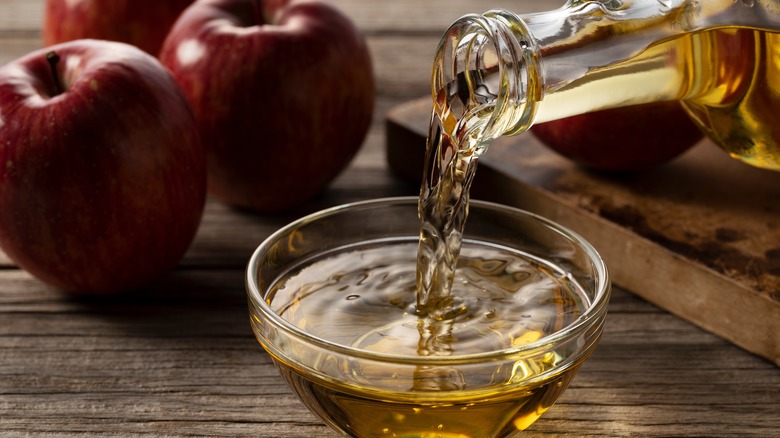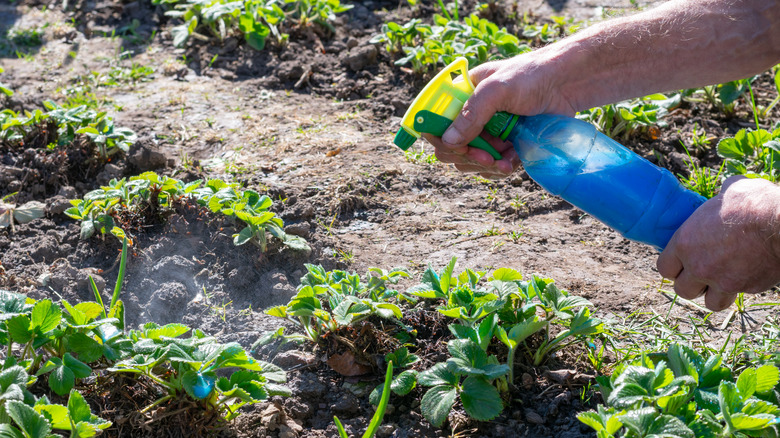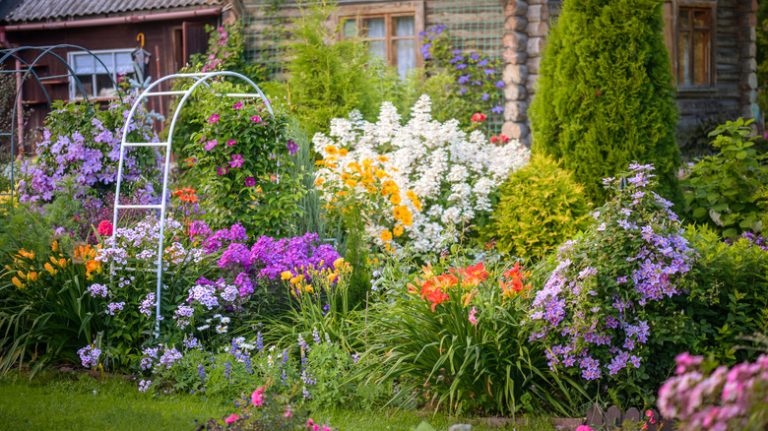If you’re struggling with powdery mildew in your garden, some online garden centers suggest that vinegar can be a potent remedy against this common fungal issue. Acetic acid, a primary ingredient in vinegar, is known for antimicrobial properties that may explain its effectiveness against powdery mildew, which commonly appears as a white or grayish powdery coating on the leaves and stems of plants. This fungal disease can stunt plant growth and diminish the overall health and yield of your garden.
The use of vinegar to combat powdery mildew is more than just a gardening myth. It’s briefly mentioned even in academic blogs like Oaksterdam University, though primarily in passing. Although the scientific evidence supporting vinegar’s effectiveness against powdery mildew is scarce, one 1997 study published in the journal Crop Protection highlights vinegar’s efficiency as an antifungal. In theory, the acetic acid in vinegar disrupts the growth of mildew to some extent, acting as a natural alternative to commercial fungicides.
Keep in mind, though, that vinegar is not a one-stop solution. To effectively manage this plant disease, it helps to understand the causes and behaviors of powdery mildew. You might also have to combine vinegar treatments with other methods, and good gardening practices might yield the best results against this pesky garden intruder.
How to treat powdery mildew with vinegar

Powdery mildew typically arises due to certain environmental conditions — for instance, high humidity combined with moderate temperatures. According to Colorado State University, it often occurs when plants are overcrowded, as poor air circulation fosters the humid conditions that powdery mildew loves. This fungus can affect a wide variety of plants, from vegetables to ornamentals, making it a common concern for gardeners. To use vinegar against powdery mildew, it’s best to dilute the mixture. A diluted solution reduces the risk of harming the plants while providing enough acetic acid to potentially reduce the mildew. To start off, prepare a gallon of water and mix in a solution of 2 to 3 tablespoons of the normal apple cider vinegar formulation, which contains about 5% acetic acid.
Apply the solution using a spray bottle, targeting the affected areas of the plant. It’s best to do this during cooler parts of the day, such as early morning or late evening, to avoid the sun accelerating the vinegar’s acidity, which can harm the plant. Ensure you coat the leaves and stems where the powdery mildew is visible, but avoid oversaturating the plant. Regular application may be necessary, as vinegar provides a more immediate than long-term solution. Monitor your plants for signs of improvement or recurrence, and reapply as needed.
Tips and consideration for the use of vinegar against powdery mildew

While vinegar can be an effective tool against powdery mildew, there are important considerations to keep in mind. First, consider the type of vinegar used. Apple cider vinegar is commonly recommended, which could be due to the higher levels of acetic acid in white vinegar – typically around 4% to 7%. In contrast, apple cider vinegar’s level of acetic acid usually ranges from 5% to 6%. Some sites note that an excessive amount of acid can burn the leaves, so take care. To be on the safe side, mix the regular apple cider vinegar (around 2 to 3 tablespoons) with a gallon of water.
Another concern is the potential increase in soil acidity. Vinegar, being acidic, can alter the pH balance of your soil. Not all plants thrive in acidic soil, and when vinegar is used excessively or too frequently, this change can affect plant health and soil quality. To mitigate this risk, avoid spraying the soil directly. Focus the application on the plant’s affected parts and try to limit runoff. If you’re treating plants in containers, ensure proper drainage to prevent vinegar from accumulating in the soil.
You can also improve air circulation around your plants by pruning overcrowded areas and spacing out plantings. Additionally, choose resistant plant varieties whenever possible because they are less likely to contract this fungus. Regularly inspect your garden for early signs of powdery mildew, as early detection and treatment can prevent its spread.



